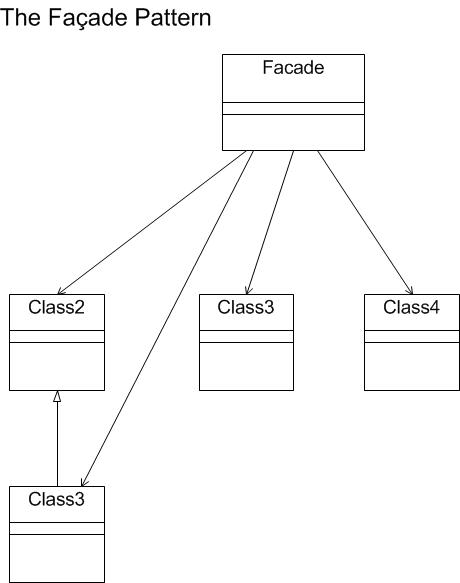The Facade Pattern: Role and Function in Structural Patterns
What is the role and function of the Facade Pattern within the context of Structural Patterns?- Introduction:
Within the architectural paradigms of software design, structural patterns provide robust methodologies to shape the manner in which classes and objects interrelate. Amidst this tapestry, the Facade Pattern emerges, bearing the promise of simplification. But as with all designs, it invites scrutiny, demanding a critical examination of its utility and potential pitfalls. - Role of the Facade Pattern:
The Facade Pattern primarily serves as a gateway, offering a unified, high-level interface to a range of interfaces in a subsystem, striving to make the subsystem easier to use.
2.1. Principal Roles:- Simplifier: At its core, the Facade Pattern is a simplification mechanism, streamlining complex operations into singular, cohesive actions.
- Integrator: By coalescing myriad subsystem functionalities, the pattern operates as an integrator, establishing clear entry points to otherwise intricate subsystems.
- Function of the Facade Pattern: The Facade Pattern encapsulates the complexities of subsystems, providing an interface that abstracts and consolidates these intricacies.
3.1. Key Components:- Facade: The namesake of the pattern, it provides a simplified, unified interface to the underlying subsystems. It delegates client requests to appropriate subsystem objects.
- Subsystem Classes: These are the components that undertake the actual work, their complexities abstracted by the Facade.
3.2. Operational Dynamics:- A client communicates solely with the Facade, seeking the execution of a particular function.
- The Facade processes this request, determining the appropriate subsystems and operations necessary.
- Subsystem operations are invoked in a manner that is opaque to the client, effectively hiding the intricate mechanics.
- Critical Analysis:
Advantages Under The Lens:- Reduced Complexity: The Facade Pattern undeniably curtails complexity, allowing clients to interact with a singular interface rather than a convoluted subsystem.
- Flexibility: Facades furnish a level of abstraction, offering the freedom to modify the subsystem's internals without affecting the client.
Pitfalls and Concerns:- Over-simplification Risk: In its bid to simplify, there's a potential peril of the Facade being too generic, stripping away the power and flexibility that direct interaction with the subsystem might afford advanced users.
- Hidden Dependencies: The pattern might obfuscate critical dependencies within the subsystem, potentially leading to a lack of understanding or inadvertent errors when changes are made.
- Layering Overhead: While the Facade provides simplicity, it also introduces an additional layer. This can occasionally result in performance overhead, especially in systems where performance is paramount.
- Conclusion: The Facade Pattern, when observed critically, stands as a double-edged sword in the realm of structural patterns. Its prowess in simplifying and abstracting intricate subsystems is commendable. Yet, it is not without its caveats. Like all design patterns, its application demands judiciousness, a careful consideration of the trade-offs involved. While it undoubtedly enhances accessibility for many users, it must be wielded with an acute awareness of its potential to obfuscate and inadvertently complicate. The Facade Pattern, in its essence, serves as a poignant reminder of the complexities inherent in the quest for simplicity.
Facade Pattern Description:
The Facade pattern provides a unified interface to a group of interfaces in a subsystem.
The Facade pattern defines a higher-level interface that makes the subsystem easier to use because you have only one interface. This unified interface enables an object to access the subsystem using the interface to communicate with the subsystem.
The figure below illustrates the Facade pattern.
The Facade pattern defines a higher-level interface that makes the subsystem easier to use because you have only one interface. This unified interface enables an object to access the subsystem using the interface to communicate with the subsystem.
The figure below illustrates the Facade pattern.

Benefits of the Facade Pattern:
The following lists the benefits of using the facade pattern.
- Provides a simple interface to a complex system without reducing the options provided by the system.
- Shields clients from subsystem components.
- Promotes weak coupling between the subsystem and its clients.
- Reduces coupling between subsystems if every subsystem uses its own Facade pattern and other parts of the system use the Facade pattern to communicate with the subsystem.
- Translates the client requests to the subsystems that can fulfill those requests.
When To Use the Facade Pattern:
You should use the Facade pattern when:
- You want to provide a simple interface to a complex subsystem.
- There are many dependencies between clients and implementation classes of an abstraction.
- You want to layer your subsystems.
Facade Pattern Code